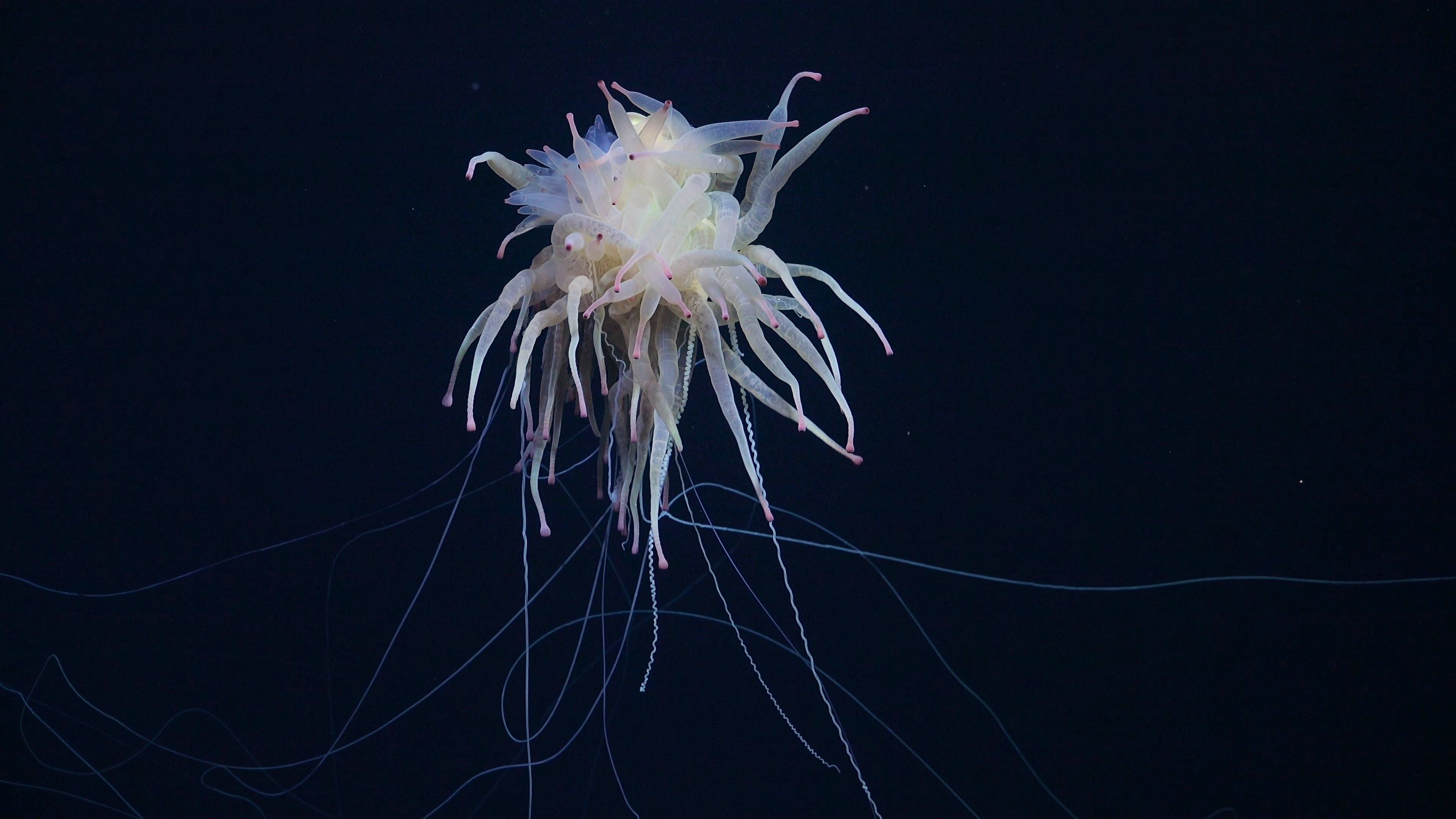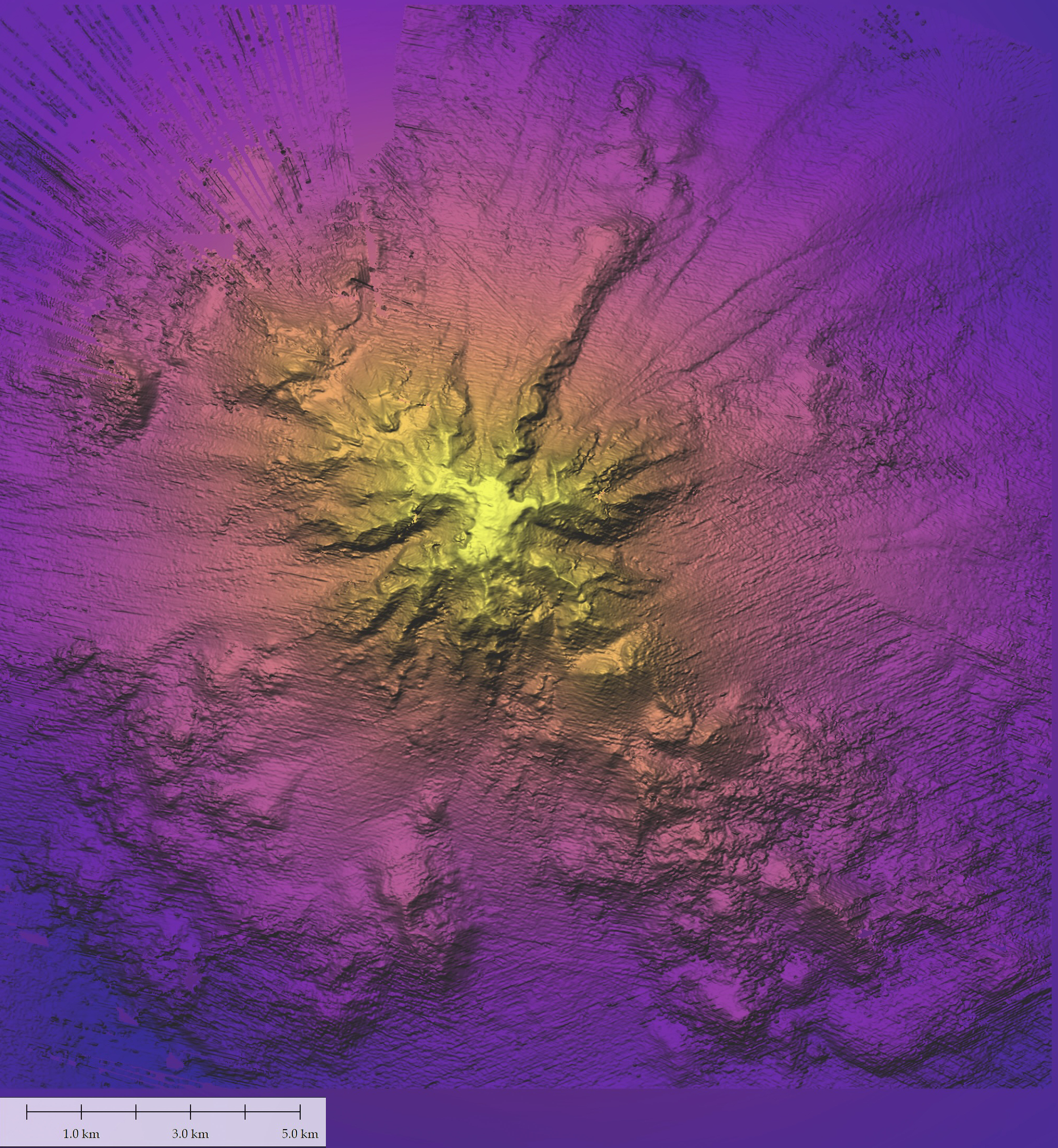Watch 'spaghetti monster' with dozens of pink-tipped sausage legs swimming near Nazca Ridge
Researchers exploring the seafloor off the coast of Chile recently captured mesmerizing footage of a flying spaghetti monster — a carnivorous, colonial creature with countless milky-white arms.

New footage shows a "flying spaghetti monster" waving its many arms nearly 2,200 feet (665 meters) below the surface, near an underwater mountain off the coast of Chile.
Scientists captured the footage with a remotely operated vehicle (ROV) deployed from the research vessel Falkor (too) close to a previously unexplored seamount on the Nazca Ridge, an underwater mountain chain in the southeastern Pacific Ocean. In the video, the spaghetti monster (Bathyphysa conifera) is filmed up close, revealing the creature's pink-tipped, sausage-like arms and other filamentous appendages.
"The seamounts of the Southeastern Pacific host remarkable biological diversity," Alex David Rogers, a marine biologist and science director at Ocean Census, a global program that aims to accelerate the discovery of marine species and participated in the discovery, said in a statement.
Researchers spotted the flying spaghetti monster roughly 900 miles (1,450 kilometers) off the coast of Chile, near a little-known seamount that towers 10,200 feet (3,109 m) above the seafloor.
Related: Watch hypnotizing footage of mysterious deep-sea worm dancing in the twilight zone
Flying spaghetti monsters are colonial organisms made up of thousands of multicellular "zooids" that each contribute to a specific function, such as reproduction or digestion. Spaghetti monsters are carnivorous and typically live between 3,300 and 9,900 feet (1,000 to 3,000 m) deep. They can grow several feet long, according to the statement.
The expedition that captured the new footage, led by the Schmidt Ocean Institute, is the third of its kind to explore mountain chains off the coast of Chile this year. Previous expeditions between January and February uncovered more than 100 new species and a gigantic seamount along the Nazca Ridge and neighboring Salas y Gómez Ridge.
Sign up for the Live Science daily newsletter now
Get the world’s most fascinating discoveries delivered straight to your inbox.

The three expeditions have increased the number of known species in the southeastern portion of the Pacific Ocean from 1,019 in 2023 to more than 1,300 currently, according to the statement.
The research "will significantly enhance our understanding of the distribution of remarkable lifeforms on these underwater mountains, including several that have never before been mapped or seen by human eyes," Rogers said.
During the recent dive, researchers also captured the first ever footage of a live Promachoteuthis squid — a type of small, weak-muscled squid that scientists had previously only described from dead specimens — and videos of a Casper octopus, a creature so new to science it doesn't have a scientific name yet.

Sascha is a U.K.-based staff writer at Live Science. She holds a bachelor’s degree in biology from the University of Southampton in England and a master’s degree in science communication from Imperial College London. Her work has appeared in The Guardian and the health website Zoe. Besides writing, she enjoys playing tennis, bread-making and browsing second-hand shops for hidden gems.









